Mari 7.0’s new internal map baking engine allows users to bake texture maps without leaving Mari. Importing USD files into pipelines is now easier, and the new project backups save time.
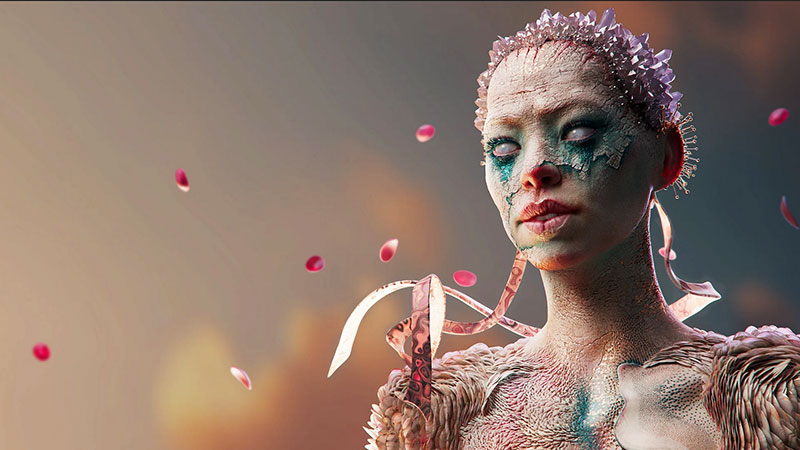
Mari 7.0 has new internal map baking engine that allows users to bake texture maps without leaving Mari. Automatic Project Backups lend artists the flexibility to save work wherever it needs to go, and navigate through iterations when responding to feedback. Working in the node graph has become simpler, 60 new grunge maps are available to enhance material realism by masking details like dust and rust.
An expanded Python script library supports sharing between artists, and new procedural nodes facilitate the creation of interesting textures.
Map Baking
Mari’s Bakery, the new map baking engine, has a complete set of tools for creating your own mesh map. You can now create geometry maps, including curvatures and occlusions, without resorting to a separate application or plugin. It is now possible to quickly bake maps for multiple objects at once across multiple UDIMs without leaving Mari and disrupting the workflow.
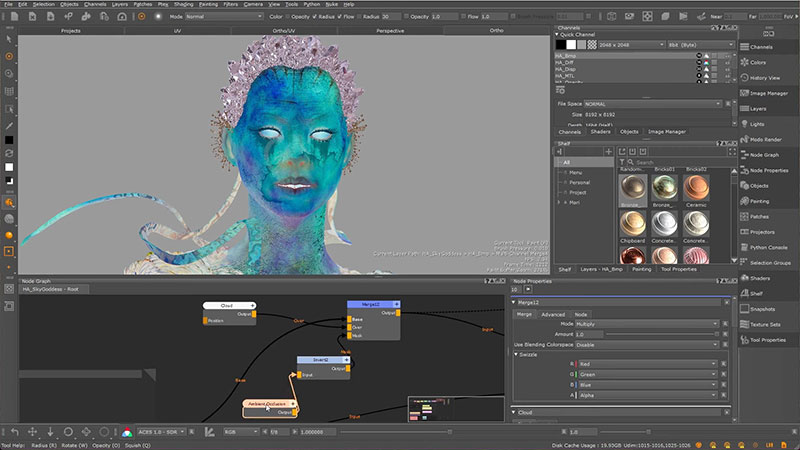
Baking is critical aspect of texturing because it allows the detail from high-res models to be displayed on low-res models, therefore needing fewer computational resources. High-resolution 3D source data is often computationally too expensive to use when rendering, texturing or animating. Instead, a 2D texture map can draw the same details more efficiently, without loss of fidelity.
Baked maps can then be used to produce complex materials, influencing how the textures interact with light and capturing information that might otherwise have to be painted separately for each asset. In short, baking converts and flattens dynamically computed 3D geometry into a 2D texture map that serves as a frozen snapshot of the surface properties, which can then be applied to a lower poly mesh to generate detail within the shader.
Node Graph UX, Shelf Content, Project Backup
Connecting, disconnecting and re-connecting nodes in Mari’s node graph is now more efficient – handling multiple nodes at once, using the cursor as a razor and shaking to disconnect are new ways to reduce clicks. New keyboard commands have also been added.
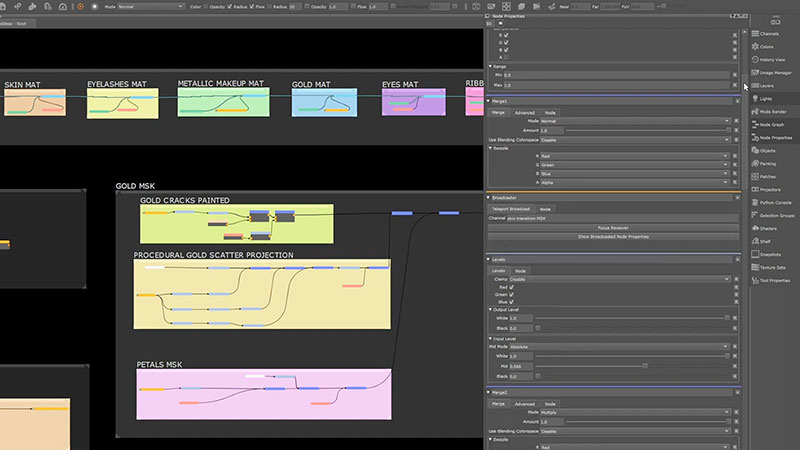
Mari artists now have access to over 60 new grunge break-up maps, by texture artist Johnny Fehr, to help get projects started. New Python scripts are available on the shelf, with procedural nodes for more flexibility to convey stories through textures.
A new lightweight project backup system saves your work as you go, with the flexibility to choose whether you want the backup stored locally or on a network. With the ability to add notes with the API, and revert backwards and forwards, you can navigate to a project iteration you received feedback on, for instance, without losing any of your painting. Save points include the date, time and machine name and are found through the right-click menu on a project thumbnail.
Bubbles and Camouflage
Two new procedural nodes in Mari 7 are Bubbles and Camouflage, intended to make your texture work more efficient and customizable. The Bubbles node creates detailed geometric textures such as reptile scales or brick patterns and a variety of similar procedural patterns derived from cell or hexagon shapes. You can use random colour values as well as offsetting the image in the X and Y axis. Bubbles may be used as a mask or in conjunction with other procedural nodes to recreate numbers of geometric shapes without relying on flat 2D images.
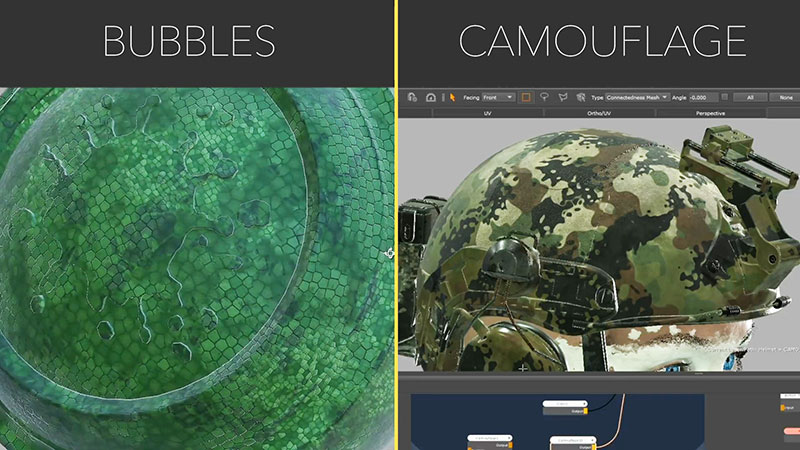
The procedural noise node Camouflage generates spotty, camo-style textures, useful for military elements but also for abstract designs. It produces the characteristic camouflage or splatter effect by mixing together two noise signals, Frequency A and Frequency B, with a distance field, Threshold, to produce varied patterns. The node can be combined with other procedural nodes to create more complex, organic looking patterns.
USD Import
Mari ships with an importer for bringing USD files directly into your project. However, feedback on Foundry’s USD workflows has suggested that a full revamp of the existing importer would be a good idea. This update makes importing with variants more straightforward, so that assets can be carried through the USD pipeline with less pipeline friction.
When loading in a USD file, users set specific settings within the Geometry tab. Options found in the Channels, Color Settings and Lighting tabs are the same as when loading a .obj, .abc or .fbx file.
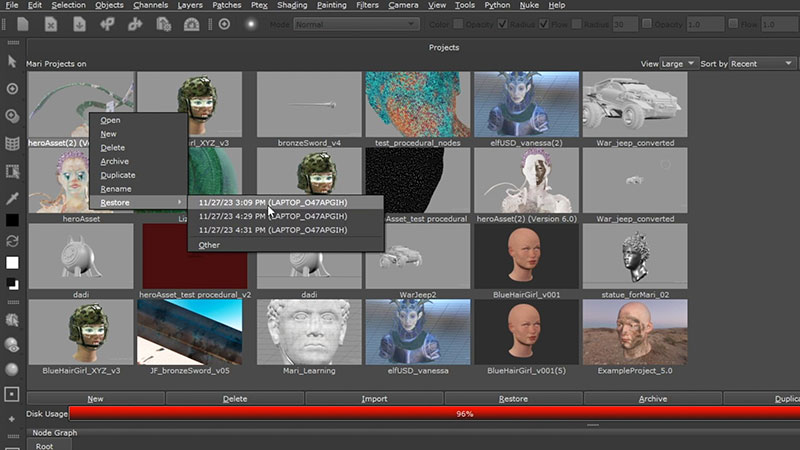
Shaders
Mari 7.0 Shader updates build on the relationships Foundry has developed with their render partners. They update both the Chaos V-Ray and Autodesk Arnold shaders for more accurate work and feedback, so that what you see when working in Mari is what you'll find in the final render.
Team licensing is also now available for administrators who need to manage Mari licenses, ensuring that artists are only using the licenses they need, at the time they are needed. www.foundry.com


